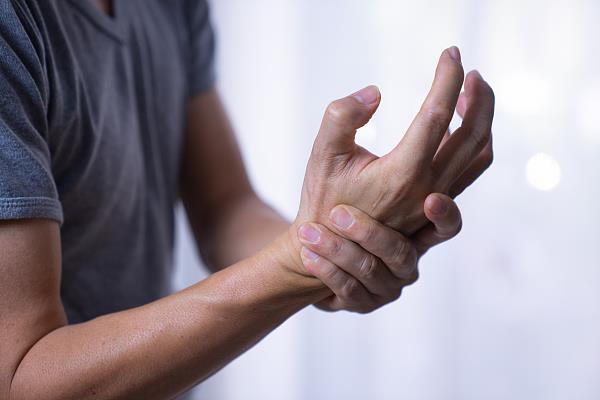Late at night, you're awakened by a sharp pain in your toe. It's red and swollen like a ripe cherry, and even the blanket hurts. This isn't just ordinary foot pain; it's gout "declaring war" on you!
Many people think gout is just a "punishment" for eating too much seafood, but they don't realize that high uric acid, this "invisible killer," has long been lurking in your body, threatening your joints, kidneys, and cardiovascular health.

• Uric acid is actually a product of the body's metabolism of purines.
When uric acid levels are too high, they can form crystals in joints, kidneys, and other areas, leading to gout, kidney stones, and even affecting heart health.
420 μmol/L is the warning line for uric acid levels. Above this level, the risk of gout increases significantly.
You may think that high uric acid levels are only a problem for middle-aged and elderly people, but in reality, with today's fast-paced lifestyles, irregular diets, and high stress levels, high uric acid levels are no longer limited to a specific demographic.
Data shows that the prevalence of hyperuricemia in adults has exceeded 15%, meaning that one in six people has high uric acid levels!

• Three common misconceptions you may be making
Myth 1: Eating seafood alone can cause high uric acid levels.
Many people believe that only seafood and offal can cause high uric acid levels. In reality, high-fructose beverages, refined carbohydrates, excessive alcohol consumption, obesity, and lack of exercise are all uric acid triggers.
Eating two cans of cola a day can easily raise uric acid levels by 15%! Even seemingly healthy fruit juices can harbor hidden risks.
Myth 2: High uric acid levels require immediate medication.
High uric acid levels don't necessarily mean medication is necessary. Through scientific lifestyle adjustments, most people can keep uric acid levels within an ideal range. Medication is only a supplement; lifestyle is fundamental.
Myth 3: Focusing solely on diet and ignoring other factors.
Many people focus solely on what they eat, overlooking the impact of exercise, sleep, and mood on uric acid. In fact, people with a positive mood are more likely to have lower uric acid levels, while anxiety and irritability are detrimental to uric acid regulation.

• Why does uric acid rise? Uncovering the metabolic "traffic jam"
The causes of elevated uric acid can be attributed to two main issues: excessive production and decreased excretion.
Excessive uric acid production is primarily caused by:
- A high-purine diet: Foods such as seafood, red meat, organ meats, and rich broths are high in purines.
- Alcohol consumption: Beer, in particular, contains purines and inhibits uric acid excretion.
- Sugary beverages: Fructose promotes uric acid production.
- Certain medical conditions: Tumor lysis syndrome, psoriasis, and others.
Reduced uric acid excretion is associated with the following factors:
- Kidney dysfunction: Chronic kidney disease and other conditions can lead to impaired uric acid excretion.
- Medication effects: Diuretics and low-dose aspirin can inhibit uric acid excretion.
- Genetic factors: Some people have a genetic predisposition to impaired uric acid excretion.
- Metabolic syndrome: Obesity and insulin resistance can reduce uric acid excretion.
Notably, changes in modern lifestyles are a major driver of the rising incidence of hyperuricemia.
Factors such as a high-calorie diet, lack of exercise, obesity, and increased stress contribute to this "metabolic traffic jam" in the body.

• 6 Simple Habits to Easily Control Uric Acid
1. Drink 2 liters of water daily to flush your body.
Boiled water is the most economical and effective acid-reducing medicine. Aim for 2000 ml of water daily, especially in the morning and between meals. Drinking plenty of water promotes uric acid excretion through urine. Remember, the more water you drink, the more uric acid you excrete! Stop drinking cola as water and try lemon water instead—it's both thirst-quenching and healthy.
2. Fiber your intestines.
Soluble dietary fiber absorbs uric acid, reducing its reabsorption into the bloodstream.
Consume 25-35 grams of dietary fiber daily, including:
- Whole grains: oats, brown rice, quinoa, whole wheat bread
- Beans and legumes: red beans, mung beans, tofu (in moderation)
- Vegetables: broccoli, mushrooms, leafy greens (500 grams or more per day)
- Seeds: flaxseed meal
3. Alkalinize your diet to increase uric acid solubility
The pH of the human body directly affects uric acid solubility. A slightly alkaline environment (pH > 6.0) significantly increases uric acid solubility.
Eat more alkaline foods:
- Leafy greens: spinach, rapeseed, lettuce
- Low-sugar fruits: strawberries, blueberries, cherries, watermelon, peaches
- Drink natural, additive-free soda water in moderation (under a doctor's guidance)
4. Exercise moderately to stimulate your metabolism.
Avoid sudden, intense exercise that can cause lactic acid accumulation. Gentle aerobic exercise such as swimming and cycling is recommended. Rehydrate promptly after exercise to help excrete uric acid. Remember, lose no more than 4 catties (1.5 lb) per month. Rapid weight loss can increase ketone bodies, which in turn inhibit uric acid excretion.
For every 1 cm increase in waist circumference, the risk of gout increases by 3%.
5. Empty your bladder before bed and urinate immediately in the morning.
Concentrated urine formed overnight contains a high concentration of uric acid, so it is important to excrete it promptly. Emptying your bladder before bed reduces the amount of urine concentrated in the bladder and prevents the formation of tiny crystals.
Practice the knee-chest position 1-2 times a day for 5-10 minutes, allowing gravity to help the urine and any tiny crystals in the lower calyx of the kidneys flow out.
6. Maintain a positive mood and allow your body to regulate itself.
A positive mood can help lower uric acid levels more easily, while anxiety and irritability can hinder uric acid regulation. Give yourself 10 minutes of "free time" every day by listening to music or taking a walk to allow your body to regulate itself.
Remember, every healthy choice you make builds the freedom to walk pain-free in the future.

• Be wary of these signs
- Sudden joint pain at night: Redness, swelling, heat, and pain at the base of the big toe may be the first symptom of gout. This pain often peaks in the early morning.
- Joint nodules: White nodules on the earlobes or finger joints are actually tophi, formed by urate deposits.
- Abnormal changes in urine: Dark, foamy urine may indicate impaired kidney function, a common complication of long-term high uric acid levels.
High uric acid levels are not a disease, but untreated they can be fatal.
From today, make health a habit, not a burden.
Every healthy choice you make builds the freedom to walk pain-free for your future self.

%20--%3e%3c!DOCTYPE%20svg%20PUBLIC%20'-//W3C//DTD%20SVG%201.1//EN'%20'http://www.w3.org/Graphics/SVG/1.1/DTD/svg11.dtd'%3e%3csvg%20version='1.1'%20id='图层_1'%20xmlns='http://www.w3.org/2000/svg'%20xmlns:xlink='http://www.w3.org/1999/xlink'%20x='0px'%20y='0px'%20width='256px'%20height='256px'%20viewBox='0%200%20256%20256'%20enable-background='new%200%200%20256%20256'%20xml:space='preserve'%3e%3cpath%20fill='%23FFFFFF'%20d='M194.597,24.009h35.292l-77.094,88.082l90.697,119.881h-71.021l-55.607-72.668L53.229,232.01H17.92%20l82.469-94.227L13.349,24.009h72.813l50.286,66.45l58.148-66.469V24.009z%20M182.217,210.889h19.566L75.538,44.014H54.583%20L182.217,210.889z'/%3e%3c/svg%3e)




